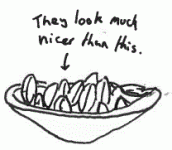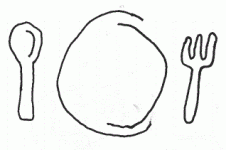The sweetest, whitest and most pleasant of roots,
– John Worlidge, The Art of Gardening.
Having been forgotten for centuries, the sweet root vegetable which was beloved by many Tudor diners only recently returned to Hampton Court Palace. The skirret was everything that we love in a vegetable: tasty, unfussy when it comes to soils, disease and frost resistant. Instead, its downfall came from the fact that it could not be grown as a commercial crop.
Nobody knows exactly what Henry VIII himself ate… It was his secret.
– Marc Meltonville, food historian at Historic Royal Palaces
Unfortunately for both the skirret and the diners who loved it, the vegetable was fiddly to prepare, difficult to harvest and fairly low-yield, so it simply did not thrive when the world turned to commercial farming. Instead, it was replaced by our beloved potatoes and slightly-less-beloved parsnips. Removed from the English daily diet, the vegetable is now one which many people have never heard of, let alone eaten.
By physicians esteemed a great restorative and good for weak stomachs… and an effectual friend to Dame Venus.
– Worlidge
Originally, the skirret grew in China and came to Europe during classical times.  The people of the British Isles probably only got their hands on them when they were brought over by the Romans, but they eventually became a feature in many monastic gardens and medieval meals. In many of these meals, vegetables were used to add bulk, sweetness and flavour, three aspects which skirret could easily provide. Even more importantly, the skirret provided many nutrients which were otherwise lacking from Tudor diets.
The people of the British Isles probably only got their hands on them when they were brought over by the Romans, but they eventually became a feature in many monastic gardens and medieval meals. In many of these meals, vegetables were used to add bulk, sweetness and flavour, three aspects which skirret could easily provide. Even more importantly, the skirret provided many nutrients which were otherwise lacking from Tudor diets.
Like many unusual Tudor foods, the skirret was claimed to be an aphrodisiac, though there is nothing to prove that this is actually the case. What we do know, however, is that it’s certainly a nice-tasting crop, with the bonus of having a sweet flavour. At a time where sugar was far too expensive to be easily accessible, the skirret’s value was increased by the sweetness it could add to dishes.
 With no lack of interest, the main problem with the skirret was its lack of supply. This is a problem which exists even to this day, although this now has more to do with a lack of interest. The crop is best grown from small plants, but many people have to resort to growing from seeds due to a lack of access to cuttings.
With no lack of interest, the main problem with the skirret was its lack of supply. This is a problem which exists even to this day, although this now has more to do with a lack of interest. The crop is best grown from small plants, but many people have to resort to growing from seeds due to a lack of access to cuttings.
Reblogged this on England's History.
LikeLike